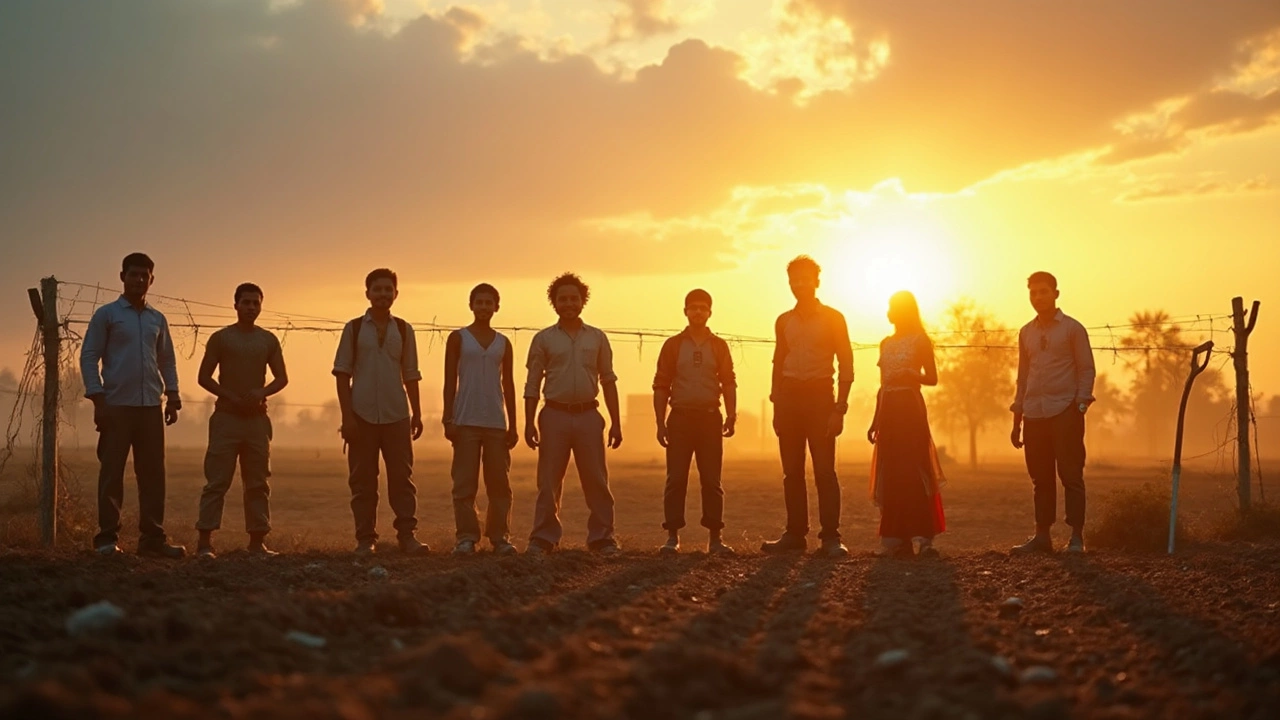If you’ve dreamed about running a farm but wince at land prices, you’re not alone. People picture acres of fields and open skies... then hit the listings and nearly faint. But there really are places where you can own a farm for a fraction of what it costs in places like California or New York. It’s just about knowing where to look—and what to watch out for.
States like Arkansas, Mississippi, and Oklahoma keep popping up with land that’s dirt cheap. We’re talking as low as $2,000 an acre in some rural spots, sometimes even less if you’re willing to roll the dice on auctions or out-of-the-way counties. It sounds almost too good to be true, and yeah, sometimes it is. But these deals exist—and people scoop them up every year.
The thing is, price per acre doesn’t tell the whole story. You want to think about more than just the sale price. What’s the soil like? How far is the nearest store or supply depot? Will you have water, electricity, or a usable road? It’s easy to get wowed by the sticker price, but experienced buyers know that the cheapest land comes with some homework. If you’re serious about getting a farm without emptying your wallet, it’s time to dig into where those real bargains are—and what they actually mean for your plans.
- Real Numbers: Where Is Land Truly Cheap?
- What Makes These Places So Affordable?
- Hidden Costs and Challenges
- Tips for Snagging a Bargain Farm
Real Numbers: Where Is Land Truly Cheap?
If you’re hunting for the cheapest farm land, stop thinking about the coasts. The lowest prices are almost always deep in the countryside, away from tourist draws and big cities. That means the Midwest, the South, and parts of the Great Plains are your best bets.
Check out this table showing the average price per acre in 2024 for some of the country’s most affordable states. These numbers come from national farmland sales reports and multiple land listing websites:
| State | Average Price Per Acre |
|---|---|
| Arkansas | $2,800 |
| Mississippi | $2,900 |
| Oklahoma | $3,100 |
| New Mexico | $1,700 |
| Colorado (Eastern Plains) | $1,800 |
| Tennessee (Rural West) | $3,200 |
For comparison, good farmland in Illinois or Iowa can run over $11,000 per acre, and don’t even ask about California—prime spots there crack $18,000 an acre without blinking.
Now, these cheap places aren’t just random patches of dirt either. Take Arkansas: south and east of Little Rock, you can still find functioning small farms with basic infrastructure at prices that almost feel like a throwback. In Oklahoma and Mississippi, open land sells every month for half of what you’d pay up north. New Mexico stands out for the absolute rock-bottom prices—though you’re also battling tough weather and remote locations.
You’ll notice the bargain states aren’t all lush and green. Drier zones, or places a bit off the grid, drop the averages way down. Want great soil and easy water access? Prepare to pay more. But if you’re flexible and ready to put in some work, these are the regions where your money stretches the furthest.
What Makes These Places So Affordable?
The first thing you’ll notice about states like Arkansas, Mississippi, and Oklahoma is that they don’t have big cities driving up the price of farmland—no crowded tech hubs, no giant industry, just lots of open space. Simply put, there’s way more land than there are buyers, and that brings prices way down. Most of these rural counties are dealing with people moving to bigger cities, leaving behind homesteads and farmland that just aren’t in demand.
Let’s break it down with some concrete facts and numbers. According to the USDA's latest survey, Mississippi’s average price for farm real estate hovered around $3,100 per acre in 2024. In Arkansas, the number was close—about $3,350 per acre. Compare that to states like California at over $12,000 per acre, and it’s clear: some places just give you cheapest farm land for your buck.
| State | Average Price Per Acre (2024) |
|---|---|
| Mississippi | $3,100 |
| Arkansas | $3,350 |
| Oklahoma | $2,900 |
| California | $12,000+ |
Why are these prices so low? Here are some common reasons:
- Fewer buyers: Young folks are moving to cities for jobs, so supply is up and demand is down in rural zones.
- Economic challenges: Some counties struggle with lower average incomes and fewer new businesses, making land even less sought-after.
- Access issues: Some land is far from schools, hospitals, or paved roads. Getting there can be a hassle, which brings costs down.
- Quality matters: Not all land is ideal for crops or livestock. Sometimes cheap means flood-prone, rocky, or just plain hard to farm without major help.
Counties in central Oklahoma, for example, often have cheap land but also face regular droughts. Parts of Mississippi look like a steal until you factor in flood risk. If you see rock-bottom prices, check what kind of crops or livestock the land has actually supported in the past. Look for local county data online, or ask folks who’ve worked in the area, before making decisions.
Cheap rarely means perfect. You’re paying less not just because it’s less crowded, but usually because there’s something tricky about the land’s location, soil, or access. Knowing what you’re buying can keep a "bargain" from turning into a headache.

Hidden Costs and Challenges
Scoring cheap land almost always comes with a few surprises, and it’s usually the hidden costs that catch people off guard. Just because you find a property in Arkansas for $1,500 an acre doesn’t mean you’re home free. A lot of the cheapest farm land is in remote areas, so you might have to spend thousands just to run power to the property or drill a well for water. In Oklahoma alone, bringing electricity out to a rural parcel can hit $10,000 or more depending on how far you are from the nearest lines.
Then there’s road access. Some bargain farmland sits at the end of rough tracks that wash out in bad weather. Grading or maintaining roads is often your responsibility, and county support can be barebones the farther out you get. Another thing to check: does that cheap acreage actually have clear title and no legal headaches? Court records in Mississippi show buyers tied up for months because the land’s history is a mess, or there are unpaid property taxes.
You can’t overlook soil quality either. A lot of low-cost plots are cheap because they’re sandy, swampy, or full of rocks. Farming tough soil will mean more money spent on amendments, tools, and hard labor. If you want to graze animals, you’ll need fencing—materials and setup on a 40-acre field can run into the thousands.
Here’s a quick list of the most common hidden costs that trip up buyers of cheap farm land:
- Utility installations (well, septic, electricity)
- Road and driveway construction
- Survey and legal fees, especially with unclear boundaries
- Soil improvement and irrigation setup
- Fencing and outbuildings for livestock
- Annual taxes, which can increase if the area develops
Don’t just factor in the sale price. Always ask about these extras before you get attached to a property. A little research now will save you from big budget shocks later.
Tips for Snagging a Bargain Farm
It’s not enough to spot cheap land—you need to make sure you’re getting a real deal and not just a headache in disguise. What works for one person might be totally wrong for someone else. Here’s what you want to keep in mind if you’re hunting for the cheapest farm land.
- Work with a local agent who knows rural land. Rural realtors spot red flags faster than any website listing. They’ll save you tons of time and might tip you off to properties not even online yet.
- Don’t skip the soil test. Land that looks lush can be useless for crops or tough for livestock. You want a soil test kit or to hire a local pro. Poor soil quality is one big reason land is cheap in some areas.
- Check for water rights and access. Cheap isn’t a bargain if you can’t water animals or crops. In some counties, you can’t even drill a well. Always verify water access before you make any offer.
- Factor in the true cost to get set up. A good deal can turn ugly if you have to pay big bucks for clearing, utilities, or roads. Add up every cost—not just what you see on the listing.
- Look into auctions and county tax sales. Sometimes farmers walk away from land, leaving it open for county auctions or back-taxes sales. You can pick up parcels for pennies on the dollar this way, but always visit the site and read auction rules carefully.
There’s no magic website that lists every mega-bargain out there, but some specialized places like LandWatch and even county clerk pages are goldmines. One USDA survey found that the average farm real estate value in Arkansas was just $3,520 per acre in 2024, compared to over $17,000 in Illinois. That gap’s hard to ignore.
| State | 2024 Avg. Farm Value per Acre |
|---|---|
| Arkansas | $3,520 |
| Oklahoma | $2,640 |
| Mississippi | $2,880 |
| California | $13,870 |
| Illinois | $17,020 |
As Mark Dotzour, real estate economist, puts it:
“Buyers get the best deals when they’re patient and don’t rush. The folks who really win at this game ask a lot of questions and aren’t afraid to walk away.”
The last thing—always visit the land in person. It’s amazing how different reality can look from glamorous listing photos. Walk the ground, meet the neighbors if you can, and notice things like flooding, access roads, and cell service. The real bargains tend to reward the folks who aren’t afraid to do some legwork.

